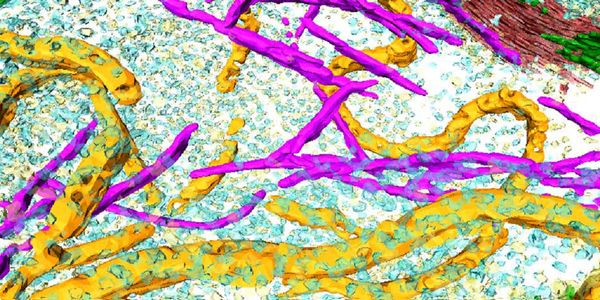University
University: is an institution of higher education and research which awards academic degrees. Universities typically provide undergraduate education and postgraduate education.
-
JUN 12, 2020 | 8:00 AMDATE: June 12, 2020 TIME: 08:00 am PDT, 11:00 am EDT Whole genome imaging using the Saphyr instrument from Bionano detects structural variants (SVs), such as insertions, deletions,...JUN 11, 2020 | 10:00 AMDATE: June 11, 2020 TIME: 10:00am PT, 1:00pm ET Correlative light and electron microscopy (CLEM) enables biological discoveries by merging different microscopes and imaging modalities to stu...Speaker: Elizabeth Wright, Ph.D. , Jae Yang, Ph.D. , Bryan Sibert, Ph.D.Sponsored By: Leica Microsystems, AlveoleJUN 09, 2020 | 10:00 AMDATE: June 9, 2020 TIME: 10:00am PT, 1:00pm ET The presentation will first discuss sepsis as a disease and then explain the importance of performing diagnostic tests in the clinical labora...JUN 09, 2020 | 6:00 AMDATE: June 9, 2020 TIME: 6am PT, 9am ET, 3pm CEST The importance of disposable plastic consumables and their overall impact on the experimental workflow of qPCR has been taken into considera...JUN 09, 2020 | 9:00 AMDATE: June 9, 2020 TIME: 9am SGT, 10am JST, 11am AEST The use of LC-MS/MS technologies in Endocrinology for clinical research is experiencing rapid growth....In 2019, over 220,000 Canadians will be diagnosed with cancer and 82,000 will die of the disease. Approximately 90% of cancer related deaths are the result of metastatic disease. This is ind...
JUN 03, 2020 | 4:00 PM
The RNAscope in situ hybridization technology allows high sensitivity, specificity and spatial resolution providing pivotal single-cell gene expression information to gain better insights in...
Speaker:
Anushka Dikshit, PhD
Neoantigen based personalized immuno-oncology drugs are a relatively new therapeutic avenue that have shown strong anti-tumor efficacy in the clinic. Neoantigen peptides have been widely rep...
Speaker:
Samantha Zaroff, PhD
While providing indispensable insight into immune processes, the live cell imaging of immune cells poses unique challenges due to their non-adherent nature. Suspension cells such as immune c...
Speaker:
Jun Park, PhD
Gene manipulation studies in primary human immune cells can answer important biological questions within a clinically relevant cellular context. In this webinar we explore the use of several...
Speaker:
Verena Brucklacher-Waldert, PhD
JUN 03, 2020 | 12:00 PM
Multiplexed immunofluorescent imaging sheds new light on cancer and other complex conditions. This imaging technique offers a deeper understanding of cells and their surroundings by providin...
Speaker:
Paul Goodwin
, Fiona Ginty
, Prachi Bogetto
A key step in the clinical production of CAR T cells is the expansion of engineered T cells. To generate enough cells for viable adoptive cell therapy, cells must be robustly stimulated, whi...
Speaker:
Pratip K. Chattopadhyay
Understanding morphogenesis is an inherently four-dimensional problem, as cells change position in space and the embryo is transformed over time. Dorsal intercalation of epidermal cells in t...
Immune checkpoint blockade has revolutionized the treatment for patients with cancer. Great efforts remain to better understand resistant mechanisms to treatment as well as means to improve...
Cancer cells can acquire immune resistance resulting in a loss of immunosurveillance. Tumor cells can upregulate PDL-1 which binds to PD-1. This complex inhibits CD8 Tumor Infiltrating cells...
Speaker:
Thomas M. Grogan, MD
























